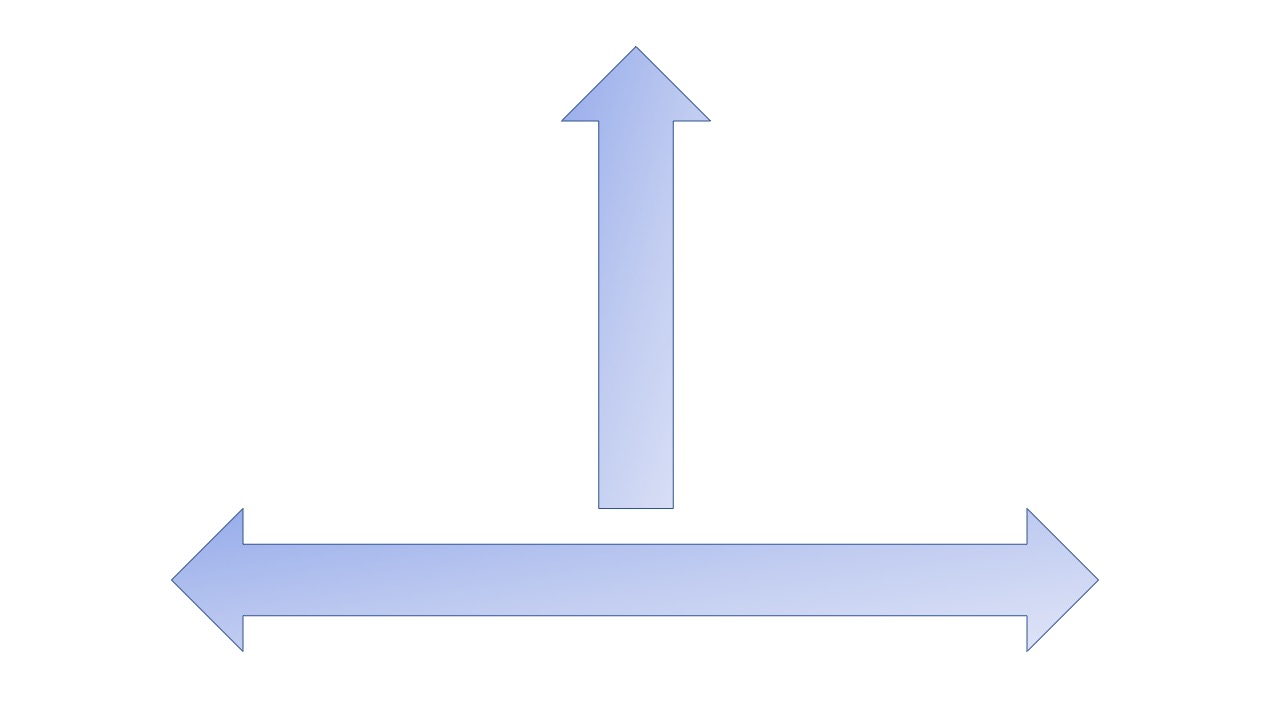There are 2 ways you can practice guitar: horizontally and vertically. As we are going to see in this article, most people get stuck with improvising because they practice too much in a horizontal way, which never leads them anywhere.
What do “practicing horizontally” and “practicing vertically” mean?
It means that you learn one concept, then move to the next one, and then to the next, and then again to another, until you’ve learnt many concepts, but aren’t truly able to use any of them.
On the other hand, “practicing vertically” means working on very few concepts, but going deep with each one of them. It means exploring many creative ways of applying a concept and combining different concepts together.

Too much horizontal practice will hurt your guitar playing
The number one issue I have observed in guitar players who have been playing for several years and call me up for guitar lessons is that they know many “techniques”, “concepts” and “things”, but aren’t able to use them in many different ways. At best, they can use it in one or two songs they have learnt by heart. At worst, they can only play the techniques in isolation but not apply them in any musical context, or they “know” theory concepts but aren’t able to use these concepts to do something concrete on their guitar.
If you take a close look at what your favorite guitar players do, you will notice that a lot of them use very techniques/concepts, but use them very well. They are able to “milk” them and create hundreds of variations and applications that sound great and make their style unique.
For example, many famous players use very few scales in their playing (sometimes as little as one scale, with variations within the scales and special notes that make it sound different). They didn’t bother learning the pentatonic, then the major scale and the modes, then the harmonic minor scale, then the melodic minor scale, the byzantine scale, the Japanese scales etc. They took a few ones (in rock/blues, very often it will be the pentatonic and the modes) and looked for thousands of ideas within that territory. They then selected the ideas they liked best, worked further on them and integrated them in their songs.
Vertical practice helps you develop a unique style
The same goes with phrasing. Some guitar players have many subtle ways of bending strings, for instance. They bend them a half-step, a whole step, a step-and-a-half, bend them slowly, fast, pick and the bend or bend and then pick, pick and then pick and bend etc. They’ve spent so much time looking for alternative ways of using a single concept that they’ve stumbled upon new techniques, that contribute to make their playing unique. There are dozens of possible combinations and alternatives for each technique, such that even if the only phrasing element you ever learnt was string bending, you could still develop interesting phrasing just by being creative with that single technique.
Compare that to guitar players who know 10 scales, 20 phrasing techniques, 40 strumming patterns and 100 chords, but can’t consistently create something interesting when they pick up their guitar. Those guitar players are condemned to one of two alternatives: play “snippets” of music of a few seconds, without being able to create a true musical moment (which typically has to last at least a few minutes, so that the listener can get into the music and experience a range of emotions before it fades off). Or being a “guitar monkey” who only plays what other people have created before him.

What can you do to avoid being such a guitar player? You can choose today to stop accumulating new “stuff” and concepts, and to decide to try things out with what you already know. That can be scary because it forces you to confront your own creativity and to accept that some of your ideas might suck, but it’s totally worth it! It will make you very quickly feel much more fulfilled as a guitar player and a musician. So start practicing vertically today!
About the author
Matthieu Delage is the director of the Escuela de Guitarra de Madrid, which is considered as providing some of the best guitar lessons in Madrid. It uses a proven method which has produced significant results for many guitar students.
Matthieu es el director de la Escuela de Guitarra de Madrid, donde se imparten unas de las mejores clases de guitarra en Madrid. Usa un método probado, que ha producido importantes resultados para muchos alumnos.